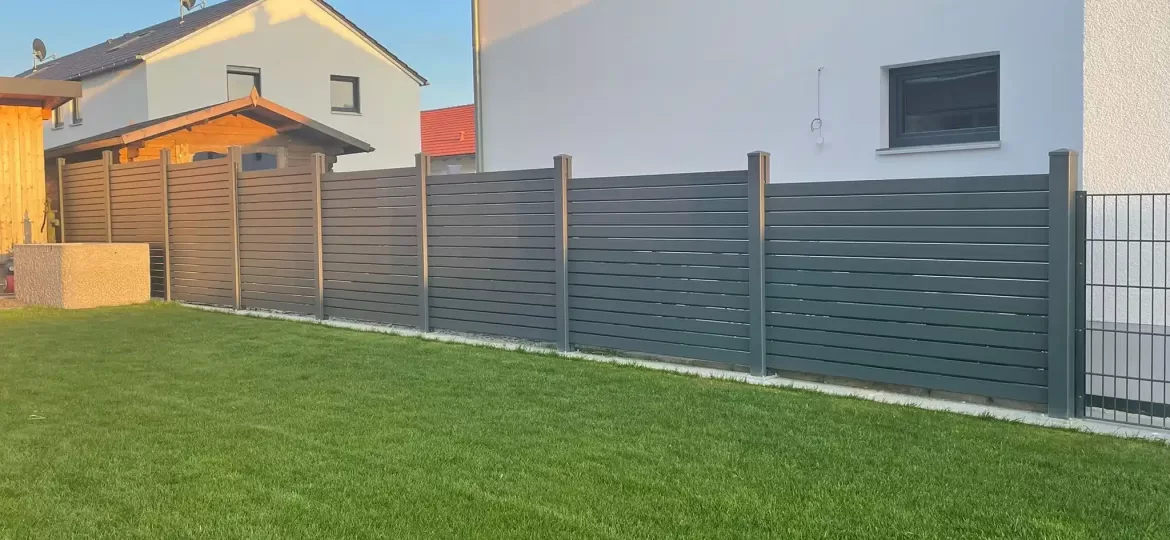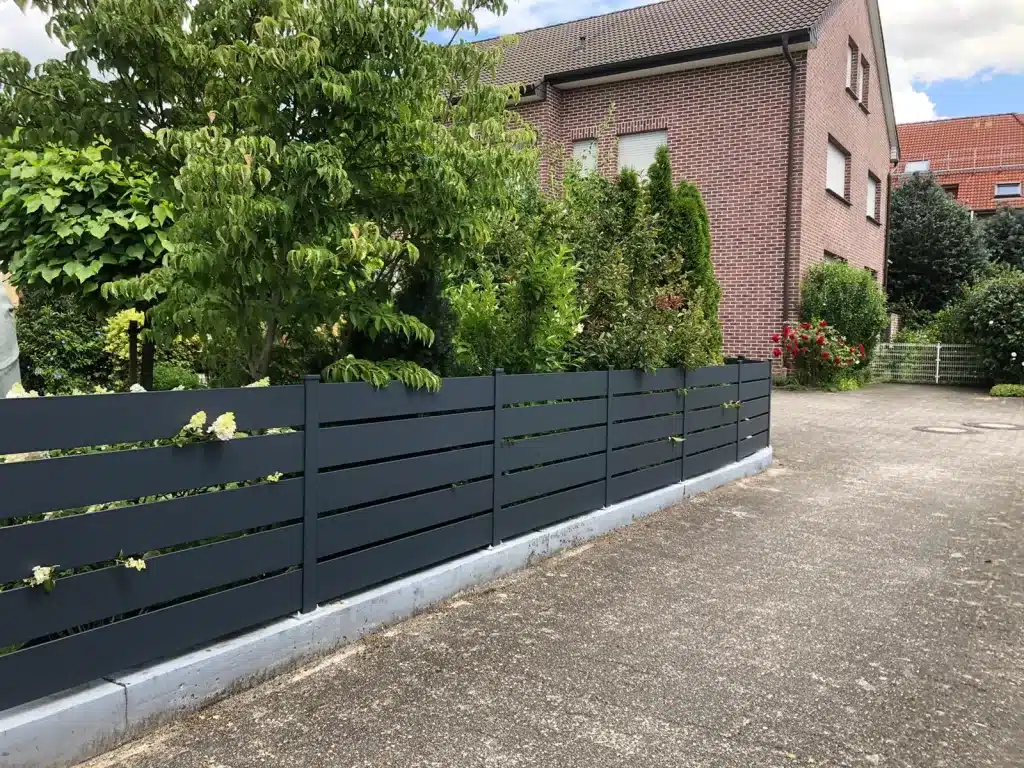
Aluminum garden fences are no longer just decorative boundaries—they are a fusion of architectural precision, long-term durability, and modern elegance. As property owners seek low-maintenance yet visually compelling solutions, aluminum emerges as the top choice over wood, PVC, or iron.
In this comprehensive guide, we’ll explore why aluminum fencing leads the market, which models are trending, what materials are used, and what you must consider before choosing one.
Why Aluminum Fencing Outperforms Other Materials
Aluminum stands out as the ideal fencing material for several reasons:
- No Rust or Corrosion: Perfect for coastal or rainy environments.
- Zero Maintenance: No repainting, no termite damage, no mold.
- Lightweight but Sturdy: Easier transportation and faster installation.
- Customizable Designs: From ultra-modern slats to ornate scrolls.
- Sustainable Choice: 100% recyclable and environmentally friendly.
- UV-Resistant Coatings: Long-lasting color with no fading or chalking.
Most Common Use Cases for Aluminum Garden Fencing
- Private Villas & Residential Gardens
- Gated Communities & Housing Projects
- Commercial Courtyards & Office Landscaping
- Swimming Pool Enclosures
- Public Parks & Educational Campuses
- Hotel Entrances & Resort Boundaries
Aluminum Fence Models and Technical Specifications
Below is a categorized table highlighting the most popular aluminum garden fence models, including structural features, standard dimensions, and coating types:
| Model Name | Design Style | Material Type | Standard Height | Finish Type | Best Used For |
|---|---|---|---|---|---|
| Modern Slat | Horizontal minimal slats | 6063-T5 Aluminum | 100–180 cm | Polyester Powder Coating | Contemporary homes, villas |
| Vertical Picket | Traditional upright bars | 6061-T6 Alloy | 120–200 cm | Anodized / Electrostatic | Schools, parks, apartments |
| Privacy Panel | Flat panel, no spacing | Composite-aluminum | 150–200 cm | UV-Protected Coating | Pool enclosures, backyards |
| Ornamental Scroll | Curved tops with scrolls | Laser-cut aluminum | 120–160 cm | Gloss powder or matte | Boutique hotels, gardens |
| Double Rail Industrial | Heavy-duty twin bar frame | Reinforced 6061 Alloy | 150–250 cm | Marine-Grade Coating | Industrial parks, logistics hubs |
🔧 Note: All models can be adapted for custom height, color (RAL-coded), and post spacing upon request.

Material Composition and Surface Treatment
| Component | Description |
|---|---|
| Fence Body | Extruded aluminum (grade 6061-T6 or 6063-T5) |
| Posts & Rails | Reinforced aluminum with internal ribbing |
| Fasteners | Stainless steel or aluminum rivets (anti-rust) |
| Coating Process | Electrostatic powder coating or anodizing |
| Color Durability | 10+ years under UV exposure, no peeling or fading |
All components are compliant with ISO 9001, Qualicoat, and RoHS certifications, ensuring performance in various climates.
Critical Considerations Before Installation
✅ Foundation Stability: Choose proper base anchoring—either concrete or steel screw piles—especially in windy regions.
✅ Coating Thickness: For exterior use, prefer powder coatings of minimum 80–100 µm for longer surface life.
✅ Post Spacing Rules: Keep post gaps within 180–200 cm to maintain structural integrity.
✅ Gate Compatibility: Confirm gate hinge systems and smart-lock integrations before ordering.
✅ Color Matching: Select RAL codes that match or complement your building façade or landscape theme.
Design Meets Security
While the visual impact of aluminum fences is undeniable, they also offer enhanced protection. Models with tight slats, spear-tops, or height extensions serve as effective deterrents against intrusion—without sacrificing beauty.
Optional features like solar-powered LED caps, motion sensors, or smart gate openers further elevate both functionality and luxury.
Environmental and Economic Benefits
Unlike steel or timber, aluminum requires:
- No annual painting
- No chemical treatments
- Minimal maintenance costs
Its light weight reduces transport emissions, and its full recyclability ensures it fits into modern sustainability mandates.
🌿 Eco Highlight: Choosing aluminum fencing can reduce your landscape’s carbon impact by up to 40% over a 10-year span compared to traditional fencing.
Final Thoughts: Why Aluminum is the Future of Garden Fencing
In today’s architecture and landscaping, aluminum garden fences represent the perfect intersection of aesthetics, performance, and responsibility. Their customizable nature, corrosion resistance, and stylish appeal make them a long-term solution for homeowners, architects, and contractors alike.
Technical Assurance Statement
All technical information and specifications in this article have been validated through global industry standards, manufacturing certifications, and real-world case studies. It is suitable for use in technical catalogs, export documentation, and B2B client communications.

